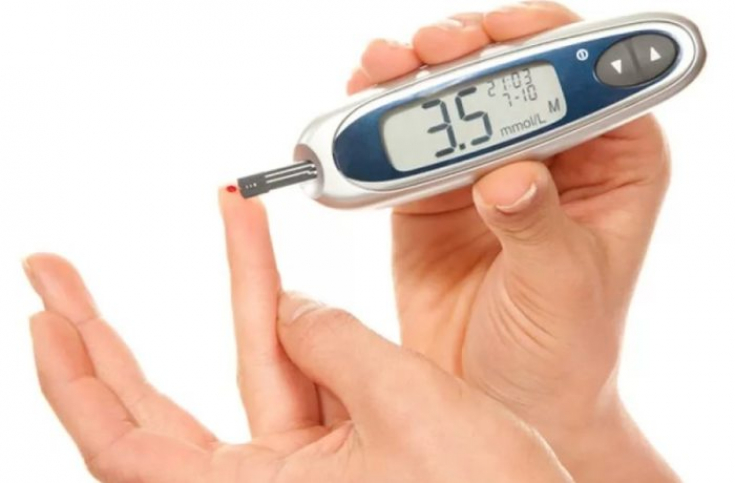Prediabetes – an intermediate state of hyperglycemia in which blood glucose levels are above normal but below the threshold values for a diagnosis of diabetes mellitus.
Although diagnostic criteria for prediabetes vary across international professional bodies, it remains a high risk factor for diabetes mellitus with an annual progression rate of 5-10%.
The article estet-portal.com will provide up-to-date information on the diagnosis of prediabetes based on clinical manifestations and laboratory results, as well as on patient management based on randomized trials.
Prevalence of prediabetes: lift the veil of mystery
CDC national report found that 37% of US adults over age 20 and 51% over age 65 had prediabetes in 2009-2012 based on fasting glucose or HbA1c levels .

According to the American National Center for Chronic Disease Prevention and the Division of Diabetes, since 2016, almost 86,000,000 adults in the US alone have prediabetes, 90% of whom were unaware of the problem.
According to the WHO, the incidence of diabetes is constant and accounts for 8.5% of the world's population among people over 18 years of age, in Ukraine - 9.1% (men - 8.3%, women - 9.7%, according to WHO data for 2016).
In Ukraine, 1,300,000 people suffering from diabetes are registered. Of these, only 6.5% of patients with type 1 diabetes. Half of diabetic patients were previously diagnosed with prediabetes.
The International Diabetes Federation predicts an increase in the prevalence of prediabetes to almost 5,000,000,000 by 2035.
Follow us on Telegram
Modern criteria for prediabetes
The World Health Organization (WHO) has defined prediabetes as a state of intermediate hyperglycemia using two specific parameters:
•
•
• combinations of these two indicators based on a 2 hour oral glucose tolerance text (OGTT).
The American Diabetes Association (ADA) gives the following reference values:
• impaired glucose tolerance - 7.8-11.0 mmol / l (140-200 mg / dl);
• lower limit of hyperglycemia on an empty stomach - 5.6-6.9 mmol / l (100-125 mg / dl);
• An additional criterion is the level of glycated hemoglobin A1c (HbA1c) for the diagnosis of prediabetes.
Criteria for diabetes mellitus:
1. Fasting blood glucose2. Oral glucose tolerance test ≥ 200 mg/dl (≥ 11.0 mmol/l);
3. Hb A1C ≥6.5%.
Insulin resistance reduces the sensitivity of peripheral tissues to insulin by an average of 50%.
The test is highly sensitive and can detect insulin resistance even in normoglycaemic patients. Determined by the formula: fasting glucose × plasma insulin / 22.5. Evaluation of the results: up to 3.0 - normal, above 3.0 - insulin resistance is recorded.

Prediabetes is known to be associated with dysfunction of cardiac autonomic activity, which manifests itself in:
1. decreased heart rate variability,2. decreased parasympathetic modulation of the heart,
3. an increase in the prevalence of male erectile dysfunction.
Non-invasive assessment of the pathology of the nervous system in patients with impaired glucose tolerance showed:
1. an increase in pathologies detected in four out of five cardiovascular reflex tests,2. high prevalence of both hyperesthesia and hypoesthesia,
3. Increasing the heat perception threshold.
How to recognize diabetic neuropathy
Idiopathic polyneuropathy, pain sensory neuropathy, and small cell neuropathy are common.
Prediabetes is associated with diabetic retinopathy, an increased risk of macrovascular disease such as coronary artery disease.
Management of the Prediabetic Patient: Lifestyle Modification
Two largest diabetes prevention studies – DPP in the United States and DPS in Finland to study diabetes prevention – demonstrated beneficial effects of lifestyle interventions. In the DPP study (USA), after a three-year follow-up, it was found that intensive life interventions (ILS) lead to a 58% reduction in the risk of diabetes. ILS has made dietary and physical activity changes to reduce weight.
This study showed that for every 1 kg of weight loss in a patient, the risk of developing diabetes was reduced by 16%.
In DPS (Finland), benefits were found to be contingent on the achievement of specific lifestyle modification goals:
• more than 5% weight loss,• Fat intake is less than 30% of total energy,
• Saturated fat intake is less than 10% of energy,
• Fiber Intake ≥15g per 1000 kcal,
• physical activity more than 4 hours a week.
Management of the patient with prediabetes: choice of pharmacotherapy
1. Metformin Pros: Has additional beneficial effects such as lower body mass index (BMI) and cholesterol levels. Reduced risk of type 2 diabetes by 45%.
2. Glitazones (thiazolidinediones) Are synthetic ligands for peroxisomal proliferator-activated receptors-γ. They increase the uptake and utilization of glucose in the peripheral organs and decrease gluconeogenesis in the liver, thereby reducing insulin resistance.
Pros:
• Pioglitazone reduces the risk of diabetes by 70% in people with obesity and impaired glucose tolerance. Additional benefits were reduction in diastolic blood pressure, reduction in carotid intima thickness.• Rosiglitazone effectively reduces the risk of diabetes by 60% within 3 years.
Cons:
• Rosiglitazone is associated with significant side effects such as weight gain up to 2.2 kg, higher incidence of heart failure, liver toxicity, association with bladder cancer.
Diabetes and obesity: a new program to help manage this problem
3. α-Glucosidase Inhibitors
Prolong the total time of carbohydrate metabolism and reduce the rate of glucose absorption, reduce the postprandial rise in blood glucose.
Pros:
• Acarbose reduces the risk of diabetes by 25% in patients with impaired tolerance for 3.3 years.• Reducing the risk of diabetes by 40% in high-risk patients treated with Voglibose over a 48-week period.
Cons: flatulence and diarrhea (side effects are more pronounced with Acarbose).
Cons:
• The most common side effects of these drugs are nausea and vomiting. A significant drawback – injection route.
• Analogues of GLP-1 in 50% of cases reduce glucose levels to normal, but a constant intake of the drug is required.
5. Orlistat This is a gastrointestinal lipase inhibitor that is used to treat obesity, it works by inhibiting fat absorption by about 30%.
The criteria used to diagnose prediabetes need to be clarified, but glycated hemoglobin (HbA1c) is replacing the fasting glucose test as a modern screening test for detecting and monitoring the course of prediabetes. Currently, there is no concrete evidence to formulate clinical guidelines for the management of prediabetes. At the same time, lifestyle modification remains an important part of diabetes prevention.
The use of pharmacotherapy should be based on individual approach.
You may be interested in the article on our website estet-portal.com in the section "Endocrinology"
Glycosylated hemoglobin: what you need to know about this indicator







Add a comment